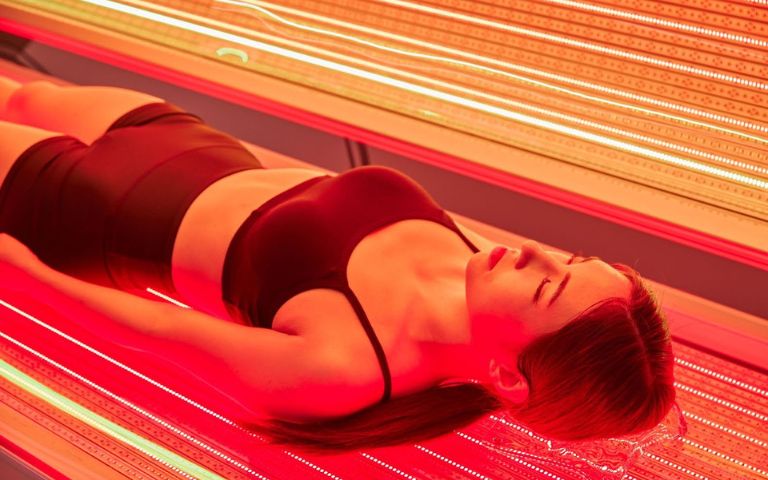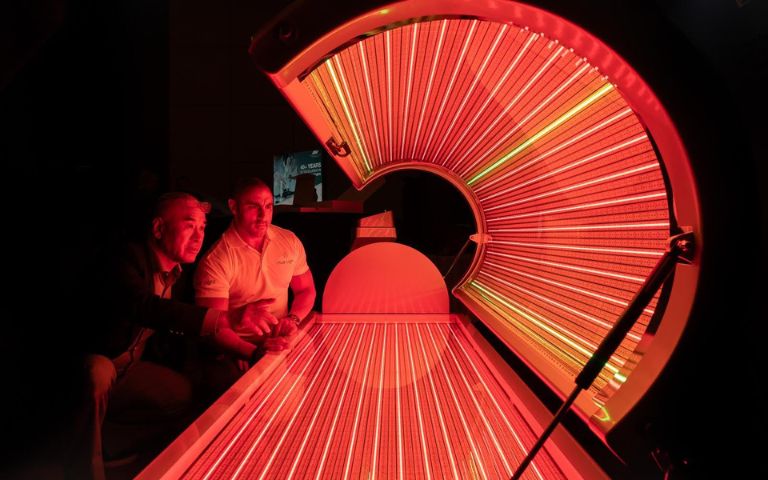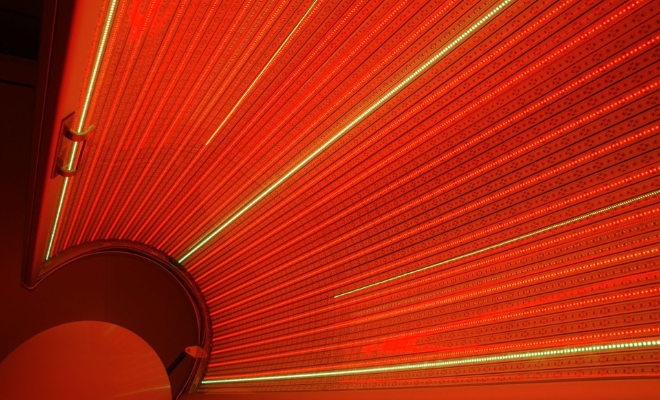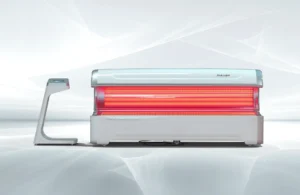Red light therapy, often called by its more familiar name, or by the precise scientific term “Photobiomodulation (PBM)”, is a technology that uses specific wavelengths of light to activate the body’s innate cellular functions and promote overall health.
But among the countless devices flooding the market, do they all deliver the same results?
Unfortunately, the answer is no. The reason so many people question the effectiveness of red light therapy is often because of the technical limitations of the devices themselves.
This guide lays out, in clear, science-based terms without vague marketing promises, the criteria you need to choose a real, clinically effective PBM device.
Part 1. The Core Principle: Why Whole-Body PBM Matters Most

Before comparing specs, it’s essential to understand the single most important principle:
Your body is an interconnected system, and true health transformations begin when light energy is delivered to the entire body.
- The Limits of Local Care: Facial masks or small handheld units can only provide benefits to targeted areas. They generally fail to deliver the systemic effects, such as improved circulation and reduced whole-body inflammation that are the hallmark of professional PBM.
- The Power of Whole-Body Care: When your entire body is exposed to therapeutic light, the energized blood circulates throughout, bringing regenerative benefits to every tissue and organ. This doesn’t just improve skin, it supports comprehensive recovery, resilience, and vitality.
If you want authentic PBM results, choosing a panel-style or full-body device is a non-negotiable foundation.
Part 2. The Expert’s Checklist: 10 Things to Look for in a Red Light Therapy Device

Once you’ve decided to invest in a full-body system, evaluate your options carefully against these ten technical benchmarks. These are the real factors that separate professional-grade devices from underperforming imitations.
1. Wavelength: Does It Deliver Multi-Wavelength Coverage?
Each wavelength penetrates to a different depth. Only a precise combination can stimulate all tissue layers, from skin to deep muscles.
Recommended Wavelengths:
- Red Light (Approx. 620–660 nm): Surface skin health, collagen production, inflammation reduction
- Near-Infrared (NIR, Approx. 810–850 nm): Deep tissues, muscle and joint recovery
Pro Tip: Look for systems that go beyond basic dual wavelengths and include 4–5 proven wavelengths (e.g., 630, 660, 810, 830, 850 nm) for full-spectrum care. Make sure the manufacturer clearly discloses the specific wavelengths used.
2. Irradiance (Power Density): Does It Deliver Sufficient Light Intensity?
Irradiance (measured in mW/cm²) is the most critical factor determining efficacy.
Recommended Minimum: At least 50–100 mW/cm² at actual treatment distance, so you can reach a therapeutic dose within a reasonable time.
Watch Out: Some brands inflate numbers by measuring right on the LED surface. Reputable manufacturers disclose real-world power output at user distance.
3. Pulsing Technology: Does It Harness the Healing Rhythm of Light?
The most advanced PBM devices use pulsing emitting light at specific frequencies, rather than continuous output. Cells often respond better to rhythmic stimulation, which can enhance treatment outcomes.
Advanced Feature: Top-tier devices integrate scientifically validated frequencies like Nogier or Solfeggio frequencies, offering targeted effects such as relaxation, activation, or cellular balancing.
4. Dosage & Treatment Time: How Efficient Is It?
Results depend on the total light dose (Joules/cm²) delivered to tissue.
What to Check: Confirm how long it takes to reach a recommended therapeutic dose (e.g., 5–10 Joules/cm²). Higher-powered devices shorten session time, making consistent use much more practical.
5. Safety: Flicker & EMF
Because you’ll be standing or lying near your device every day, safety is paramount.
- Flicker: Invisible strobing can trigger headaches or eye strain. Choose Low-Flicker or Flicker-Free systems.
- EMF: Confirm the device is designed for Low EMF output to avoid chronic electromagnetic exposure.
6. Durability & Materials: Is It Built to Last?
- Housing: Should be constructed from robust metal or high-quality medical-grade plastic.
- Cooling System: High-output LEDs generate heat, so efficient cooling fans or heat sinks are essential.
- Warranty: A minimum 1–3 year warranty indicates confidence in quality.
7. Certifications & Independent Testing: Is It Objectively Verified?
Everyone claims their device is effective. Credible evidence is what matters.
- Essential Certifications: Look for FDA clearance, CE marking, RoHS compliance, and other internationally recognized safety approvals.
- Independent Testing: Trustworthy brands share lab reports verifying wavelength accuracy and irradiance, conducted by third-party testing labs.
8. Ease of Use: Is It Simple to Operate?
A great device should be effortless to use.
- Controls: Adjustable timers, power settings, and independent wavelength controls (e.g., toggling NIR) add flexibility.
- Interface: Check that buttons and displays are intuitive and user-friendly.
9. Customer Support & Reputation: Can You Trust Them?
- Support: Ensure there is a responsive service center in your country.
- Reputation: Beyond advertising, look for independent reviews on forums and wellness communities.
- Return Policy: A fair return policy shows the brand stands behind their product.
Note: Suspiciously cheap devices often have weak output and flimsy build quality, costing you more in the long run. The smartest buyers evaluate value beyond the price tag—technology, efficacy, safety, and warranty all matter.
By following this guide, you can confidently choose a red light therapy device that truly delivers the benefits you expect rooted in science, not hype.
Conclusion: Invest in the Right Technology
Red light therapy has the potential to transform your health, but only if you invest in a device that’s built on real science, not gimmicks. The difference between a subpar gadget and a professional-grade system is more than just specs. It’s the difference between temporary novelty and long-term results.
If you’re serious about full-body wellness, cellular repair, and long-lasting vitality, look for a device that checks every box we’ve covered—multi-wavelength output, therapeutic irradiance, pulsing technology, safety standards, and clinical credibility.
At Huelight, we’ve designed our red light therapy device with these exact principles in mind, combining advanced multi-spectrum LED technology, medical-grade certifications, and whole-body immersion into one effortless, daily experience.
Whether you’re an athlete, health professional, or simply someone looking to restore your energy and performance from the inside out, you deserve a therapy solution that truly delivers.
Learn more about our Whole-Body PBM Therapy Chamber here and see how we’re helping people tap into the power of light—safely, effectively, and globally.














